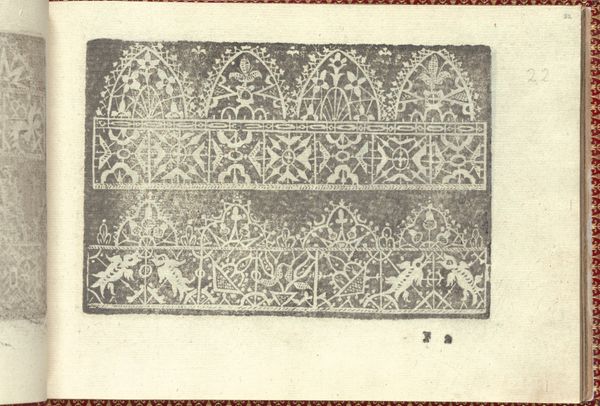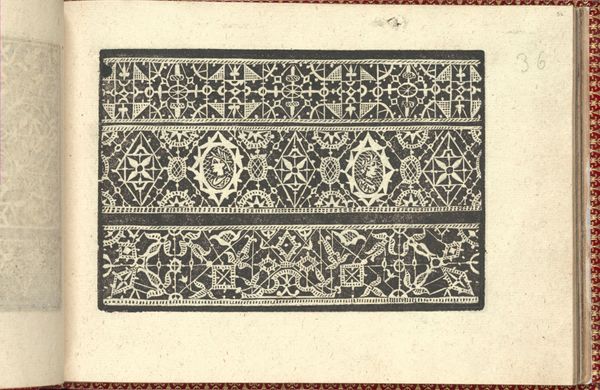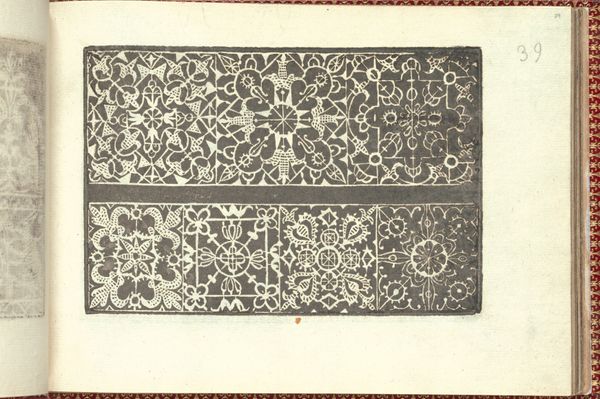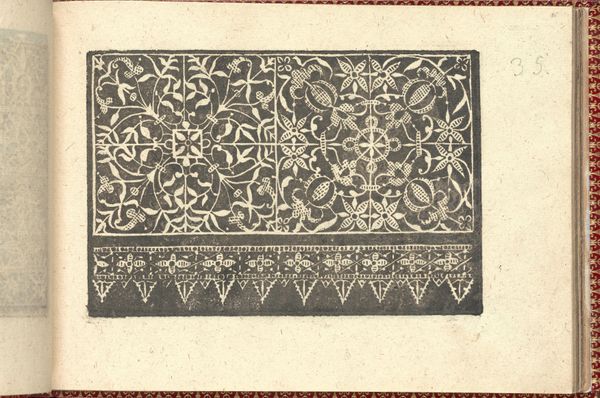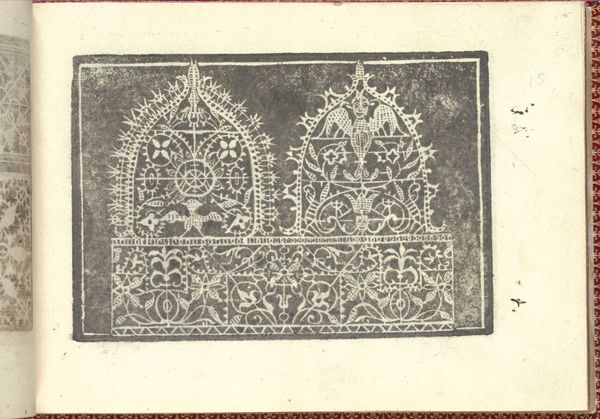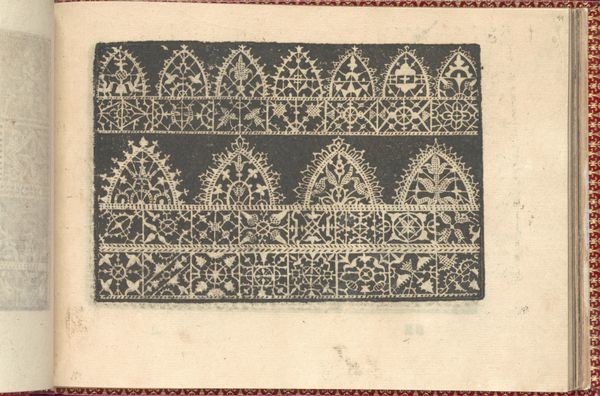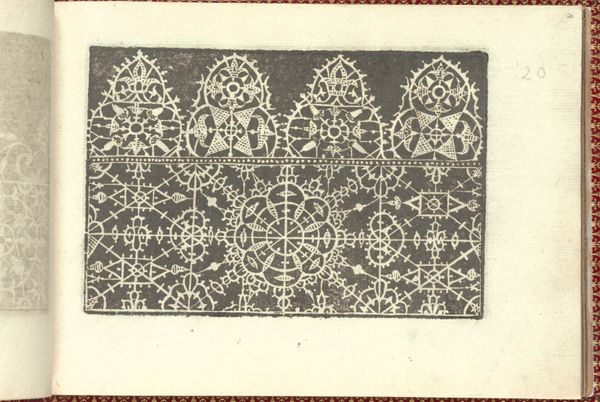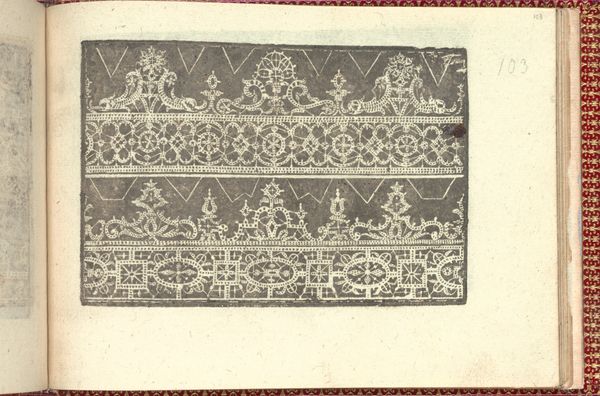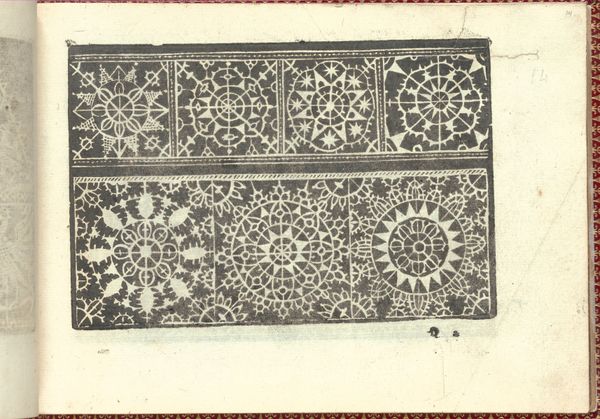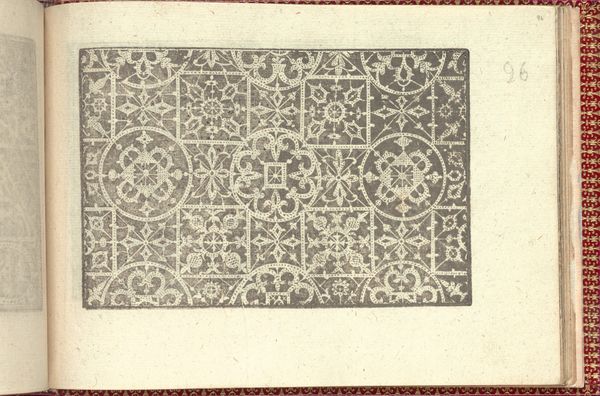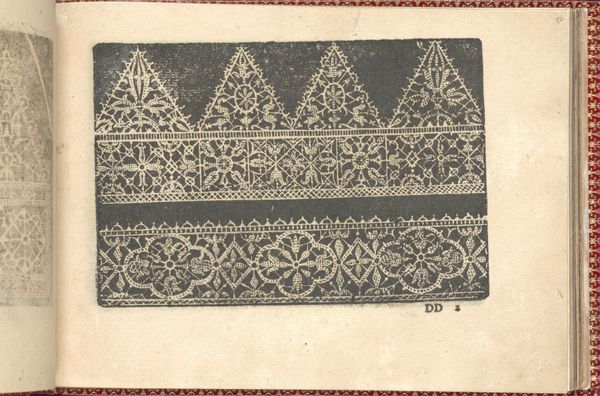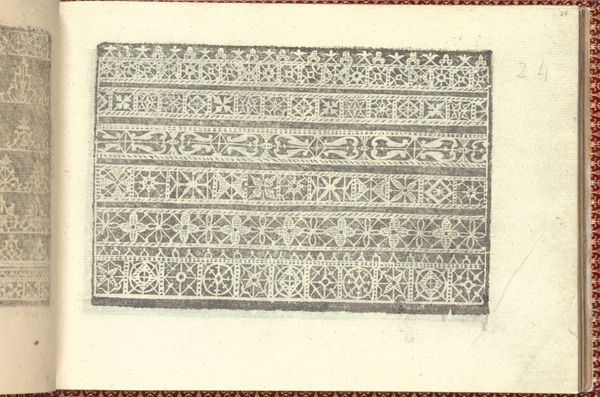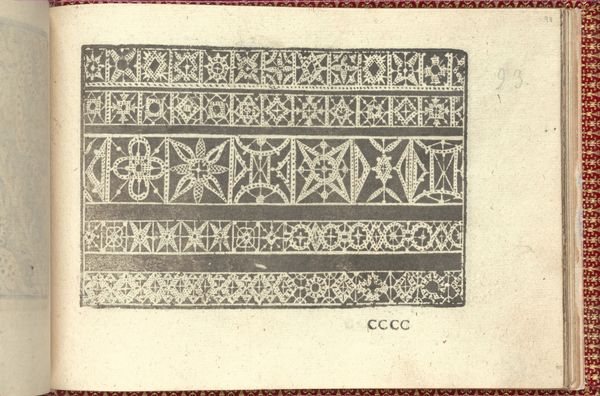
Corona delle Nobili et Virtuose Donne: Libro I-IV, page 11 (recto) 1601
0:00
0:00
drawing, graphic-art, ornament, print, paper, engraving
#
drawing
#
graphic-art
#
ornament
# print
#
book
#
paper
#
11_renaissance
#
engraving
Dimensions: Overall: 5 1/2 x 7 11/16 in. (14 x 19.5 cm)
Copyright: Public Domain
Curator: My first impression is that the intricate geometric designs evoke a sense of precision and deliberate order, which for me invites a deep dive into the underlying meanings encoded here. Editor: We are looking at page 11 from Cesare Vecellio’s "Corona delle Nobili et Virtuose Donne," specifically Book I-IV, created in 1601. This engraving on paper, residing here at the Met, presents a fascinating glimpse into Renaissance ornamentation. Curator: Ornament is definitely the key word, because while it's ostensibly surface decoration, it reminds me of the cultural weight these repeating patterns carried; they signified social status and identity in powerful visual ways. I'm especially drawn to the tension between natural forms—those tendrils like vines—and those stark, geometrical shapes in the lower register. Editor: Absolutely, the piece speaks volumes about the role of women in the early 17th century and how their identity was constructed and communicated through dress. Vecellio's books were essentially source books for designers, offering patterns that conveyed particular virtues and societal positions. The symbolic language here is extremely considered. Curator: Do you see in the cross-hatched tools a visual parallel to those vines or maybe the tendrils in the upper pattern? The effect for me suggests tools themselves might cultivate beauty, blending craft and organic growth, which might be some clue as to how one was meant to "cultivate" being a good woman. Editor: That's a really perceptive connection, and that could be interpreted in so many directions. The fact that we’re still interpreting these motifs four centuries later demonstrates the staying power of imagery in transmitting cultural ideals. Curator: The continuity embedded in such imagery is stunning. The way symbols repeat across cultures hints at archetypes deeply embedded in our shared psychology. It's all there under the surface. Editor: It serves as a visual record not just of the clothing and patterns of the time, but of the complex forces that shaped lives and continue to echo through generations. I think a deep reading provides such rewarding insights.
Comments
No comments
Be the first to comment and join the conversation on the ultimate creative platform.
